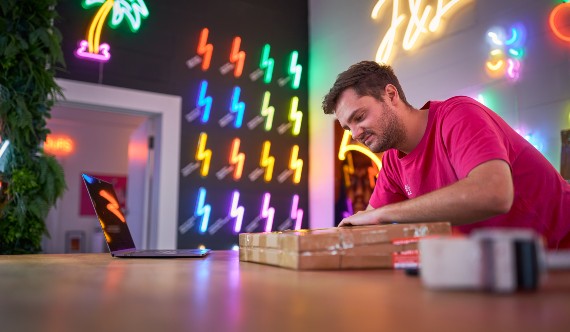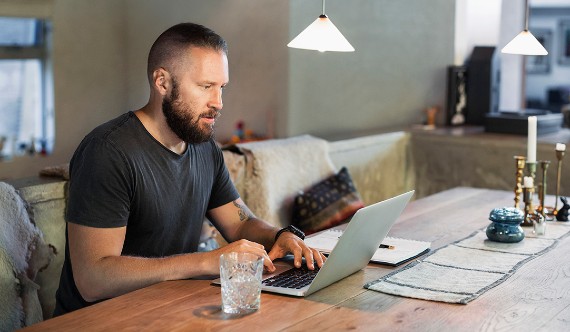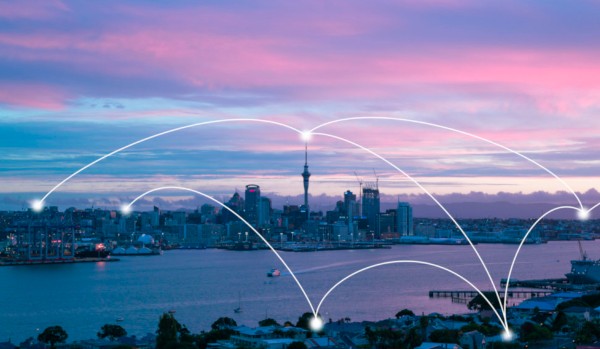The Edison Protocol
Dr Will Reedy isn't just working in the field of Internet of Things healthcare – he's living it.
Will works both as Spark's Digital Health lead and as a practising doctor. He wears a special ring on one finger. It's an Oura ring, which works with an Apple Watch to collect personal health data. The data inform a personalised precision-driven health and wellness plan. The plan is devised by the Auckland-based start-up, Edison Health.
Learn more about Oura Ring
Will explains, "They run a programme where they take your bloods, do your blood normal blood tests, biomarkers and they do your genomic screen as well. And then they come back and based on that have a precision-driven plan to maintain your health and wellness. You have what they call the Edison Protocol. And as part of that you get given this ring as a health wearable to monitor how you're progressing."There's an app that I can share with the Edison clinic, who have doctors who specialise in personalised medicine, but every day I get an update on how I've slept, my heart rate, my heart rate variability. And then I get AI, machine-driven data insights into, 'Am I ready for work today? No, I didn't really sleep that well last night.' 'Am I my exercising enough?' Those types of things.
"There's four of us within the Spark exec team involved at the moment and it's a really good example of IoT health wearables combined with other digital technologies to give me an experience around my health and wellness. Mobile phone app, IoT data, mapping my genome – and then the face-to-face piece with a precision medicine specialist."
Supporting wellbeing with IoT
When we talk about "IoT healthcare", it's not always medical in the way we're used to thinking about it. Some of its value for wellbeing lies far from clinical settings.
"Your health and wellness is determined by what we call the social determinants of health," Will explains. "So, it's what you share with providers of the health system. But it's also your education levels, it's your housing, it's your diet, it's your exercise, it's your genetics as well. If you just let the providers use IoT solutions, you wouldn't get all the data that ultimately determines how well you or I function from a health and wellness perspective.
There is a whole opportunity in New Zealand for consumers to leverage IoT solutions to maintain their health and wellness. Increasingly you'll find providers focused in the community – for example, in aged care they'll focus on IoT solutions that provide care in the community to prevent patients from ending up in the hospital system."
Healthy homes and aged care
Some of the most key information might actually be what's going on in people's homes. This includes whether the homes themselves are healthy.
"There's an interesting project that Spark is involved in, in the Waikato. It's essentially looking at detecting frailty and it's been put into 40 older people's homes to look for what I call activities of daily living. People sleeping when they should sleep, are they up and about during the day, are lights going on, is it damp and what's the temperature of the house?
"At Waikato DHB, there's a professor in Older Persons' Services who believes that with those types of sensors and data being collected in a proactive way, you can apply AI and machine learning to detect that a patient is actually deteriorating – instead of that patient falling over in the kitchen, breaking their hip and ending up in the health system. Trying to detect those types of declines earlier and then having a community nurse or community doctor go see that particular patient or family in the home and intervene earlier."
The key, Will believes, is to look beyond the "there's an app for that" mindset and look for improved outcomes. For instance, if DHBs can track a patient for four to six weeks after a hospital discharge, they may be able to avoid readmissions. This would represent a significant cost to the system and stress for patients.
But the fall in the cost of IoT technology also leaves vulnerable people in the hands of those close to them.
"My parents are in their 70s. They don't live with me. They're getting increasingly frail. Both retired a couple of years ago. The price point for this potential solution is about $30 a month and from my point of view that kind of peace of mind about making sure they're okay for $30 a month, on top of a mobile phone plan or a broadband plan, is something that I'd think about. If they're going downhill a bit, then I can pop round and check in on them."
Medical alarms
St John Ambulance, meanwhile, is working in a different area. They've developed medical alarms that aren't confined to the home. Instead, they alarms are worn by people wherever they roam. "They wear a pendant, and effectively these pendants last up to about two years. And if the power goes out, it still works," explains St John's Customer Director Pete Loveridge.
"We've had numerous occasions where people have been able to get hold of us when others can't. We're trying to take that beyond the gate, as we call it, and ensure that if people are taking their dog for a walk or something, that they can still get a hold of us."
"The internet of people's things"
St John is two years into a digital transformation that encompasses IoT. But Pete uses a different phrase.
"I call it 'the internet of people's things'. And the reason we call it that is it's about people, not just the things you can connect them to, and at St John we are all about the people. The technology is only an enabler for us to deliver better services and provide better care for people."
Things are changing in the back of the ambulance too. St John Ambulance staff now have tablets where they can enter patient information while in the ambulance. The next stage is to be able to share that information with the hospital ahead of arrival. And then, on to the patient's GP.
Will and Pete agree that in healthcare, IoT has to be about more than the cool technology. It even has to be more than the data it can generate. If wellbeing is the focus, then more than anything, IoT is about people.




